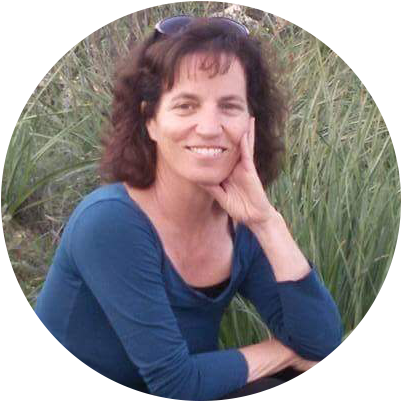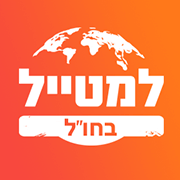Day 1: Arrival at Paro Airport (2280 m)
You can take a flight to Paro, Bhutan from Bangkok, New Delhi, Kathmandu, Dhaka and only a few other destinations. We recommend you to fly from Bangkok as Druk air offers an everyday flight from Bangkok – Paro – Bangkok whereas Druk air does not operate everyday flights from other locations.
The flight to Bhutan offers scenic views of some of the highest peaks in the world.
Paro is at an altitude of 2280 m above sea level and this valley serves as an ideal area for rice, apple, wheat, potatoes, and growing vegetables. Our Bhutanese tour guide will meet you at Paro airport, traditionally welcome you with silk scarves and thereafter transfer you to the hotel. Overnight at a hotel in Paro.
Meals: Lunch and Welcome Dinner.
Day 2: Sightseeing Paro and Around
Early morning we drive to some of the landmarks of Paro. We will visit the Ta Dzong which houses the National Museum and also visit Paro’s Rimpung Dzong. On the way down, we cross the 16th-century cantilever bridge & also visit the Drugyel Dzong victory fortress which was built in 1647 - about 18 km from Paro.
We also explore the magnificent ramparts of the erstwhile fortress which defended the country against several incursions. On a clear day, one can also view the sacred Mount Jomolhari from the northern towers. We take a visit to a farmhouse and observe the traditional Bhutanese way of life and living. Overnight at a hotel.
Meals: Breakfast, Lunch & Dinner.
Day 3: Scenic Drive From Paro to Thimphu for Sightseeing
Early in the morning, we take a scenic drive to Bhutan’s capital -Thimphu - an approx 90 minutes drive from Paro. Sightseeing in and around Thimphu valley - we visit the National Library which holds a collection of ancient Buddhist texts and manuscripts, as well as the Institute for Zorig Chusum - commonly known as Painting School, textile and Folk Heritage Museum which provides an insight into Bhutanese material culture and everyday way of life. We also visit the National Memorial Chorten, Trashichho Dzong - an impressive monastery, Bhutanese Handicrafts - displaying a wide range of beautifully hand-woven textiles and craft products. In the evening, we explore the vibrant Thimphu Bazaar. Overnight at a hotel.
Meals: Breakfast, Lunch & Dinner.
Day 4: Drive from Thimphu to Punakha Sightseeing all the Way
Driving 3 hours leaving Thimphu - the road climbs steeply through a forest of pine and cedar, decorated with hanging lichen high up near Dochula pass (3050 m). This pass offers panoramic views of the Himalayan mountain ranges on a clear day. You will see Rhododendrons, Magnolias, Junipers and Pine forests with chirping sounds of the many rare species of birds found in Bhutan. We then drive onto Lobesa taking a short hike to Chimi Lhakhang Temple. It is believed that this temple blesses women who seek fertility. Continuing north to visit the majestic Punakha Dzong - built in 1637 which strategically occupies the land between the two rivers Phochu and Mochu. Overnight at a hotel.
Meals: Breakfast, Lunch & Dinner.
Day 5: Drive from Punakha to Trongsa
Approximately 6 hours after our early breakfast to Wangdiphodrang, we continue on to Tongsa across Pele La Pass (3300 m). The pass is marked by a white chorten and many prayer flags. There is an abrupt change in the vegetation with mountain forest replaced by high altitude dwarf bamboo. Stopping at Chendebji Chorten for lunch. You can see the chorten with eyes painted at the four cardinal points. It was built in the 18th century by Lama Shida from Tibet to cover the remains of the evil spirit that was subdued at this spot. Finally reaching towards Trongsa - you can view the stunning Trongsa Dzong from a distance. Overnight at a hotel.
Meals: Breakfast, Lunch & Dinner.
Day 6: Drive from Trongsa to Bumthang
Trongsa (2300 m) literally means new town - forms the central hub of the nation and historically the place is from where attempts of unifying the country were launched.
We visit the Trongsa Dzong which was built in 1648 and is the biggest and most impressive of all the fortresses in the country. This Dzong is the ancestral home of Bhutan's royal family. Both the first and second Kings of Bhutan ruled the country from this ancient seat. All five Kings were invested as Trongsa Penlop (‘governer’) prior to ascending the throne. The monastic body shifts to Trongsa for the winter and to Bumthang in the summer. Above the town is Ta Dzong watch tower which is presently under renovation to make way for the new Museum on Bhutanese Monarchy.
After the tour of Trongsa - we drive to Bumthang, 68 km away from Trongsa - a journey of about 3 hours over the Yutong La Pass (3400 m). The road winds steeply up to the pass, then run down through the coniferous forest into a wide open cultivated valley known as the Chumey valley. Stopping in Chumey village - there are many shops selling yathra - a woolen textile. Bumthang is famous for yathra - a distinctive strip of woven woolen fabric in numerous colors and patterns mostly made using ancient dyeing techniques. The Road follows the valley down and it climbs through blue pine forests to Kiki La (2860 m). We then descent down to the Choekor Valley or central of Bumthang. Overnight at a hotel.
Meals: Breakfast, Lunch & Dinner.
Day 7: Sightseeing around Bumthang
Bumthang valley comprises of a combination of four valleys – Chumey, Choekhor, Tang, and Ura with altitudes varying from 2600 m to 4000 m also the home to many of prominent Buddhist temples and monasteries.
Visiting the Jakar Dzong - built in 1667 and it is the seat of district administration and regional monastic body of Bumthang. Jambay Lhakhang was founded in 7th century by the Tibetan king Songsen Gampo & is one of the oldest monasteries in the country.
Kurje Lhakhang, where the patron saint of Buddhism in Bhutan subdued a local demon and left his body imprint. Tamshing founded in 1501 by Terton (Treasure Revealer) Pema Lingpa the incarnation of Guru Rinpoche. The monastery has very ancient religious paintings like 1000 Buddhas and 21 Taras (female form of Buddhisattvas) in Bhutan.
Visit a farmer’s house for refreshments and observe the traditional way of living. We also visit a Swiss farm which produces cottage, swiss cheese, honey, a large variety of fruit juice and spirits. The Brewery that manufactures the famous Red Panda Beer (weiss beer) also located here. Take a leisurely walk in Chamkhar town. Overnight at a hotel.
Meals: Breakfast, Lunch & Dinner.
Day 8: Leaving Bumthang behind and Drive to Phobjikha
Driving about 7 hours to the glacial valley of Phobjikha - on the slopes of the valley - the great monastery of Gangtey is situated - established in the 17th century. The village of Phobjikha lies a few km down from the monastery on the valley floor. This quiet & remote valley is the winter home of black necked cranes which migrates from the plains of Tibet from the north to pass the winter months in a milder climate. We also explore Gangtey village and Phobjikha valley. The unique black-necked crane festival is held on the valley floor every November. Overnight at a hotel.
Meals: Breakfast, Lunch & Dinner.
Day 9: Drive from Phobjikha back to Paro
An easy drive via Wangdiphodrang. Overnight at a hotel.
Meals: Breakfast, Lunch & Dinner.
Day 10: Outing to the Taktsang Monastery (The Tiger's Nest)
The trail to the Tiger's Nest climbs through beautiful pine and rhododendron forests. You can stop at the cafeteria which offers magnificent up-close views of the tiger's nest for refreshments. Then we continue the hike for a short while until you see Taktsang monastery. Built in the 1600s, this incredible monastery clings to the edge of a sheer rock cliff that plunges 900 meters into the valley below. History states that Guru Padmasambhava - the Tantric mystic who brought Buddhism to Bhutan landed here on the back of a flying tiger and meditated here for three months. Overnight at a hotel.
Meals: Breakfast.
Day 11: Transfer to the International Airport for your Final Departure
After breakfast, our representative will drop you at the Paro International Airport for your flight departure from Bhutan.
Meals: Breakfast.







